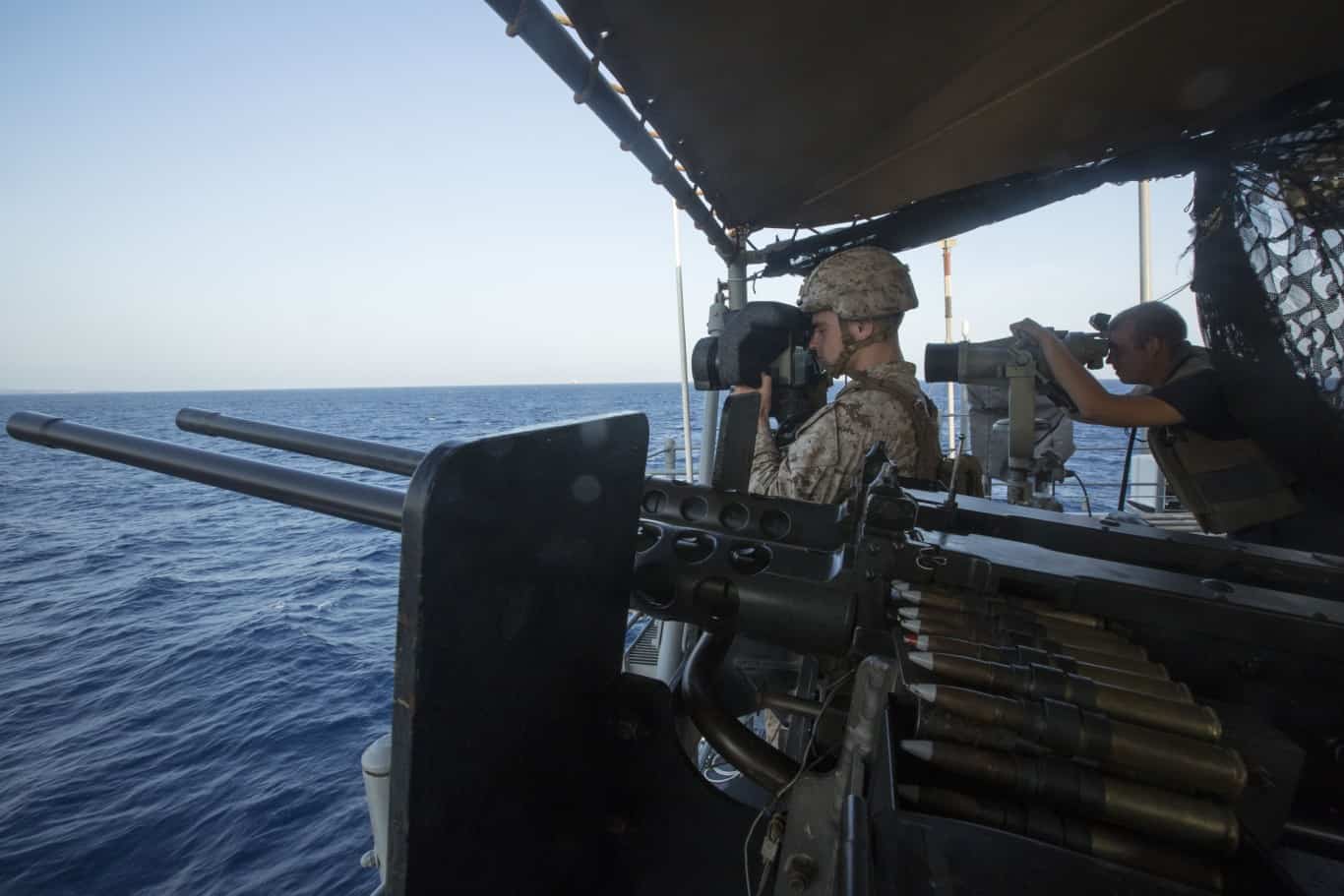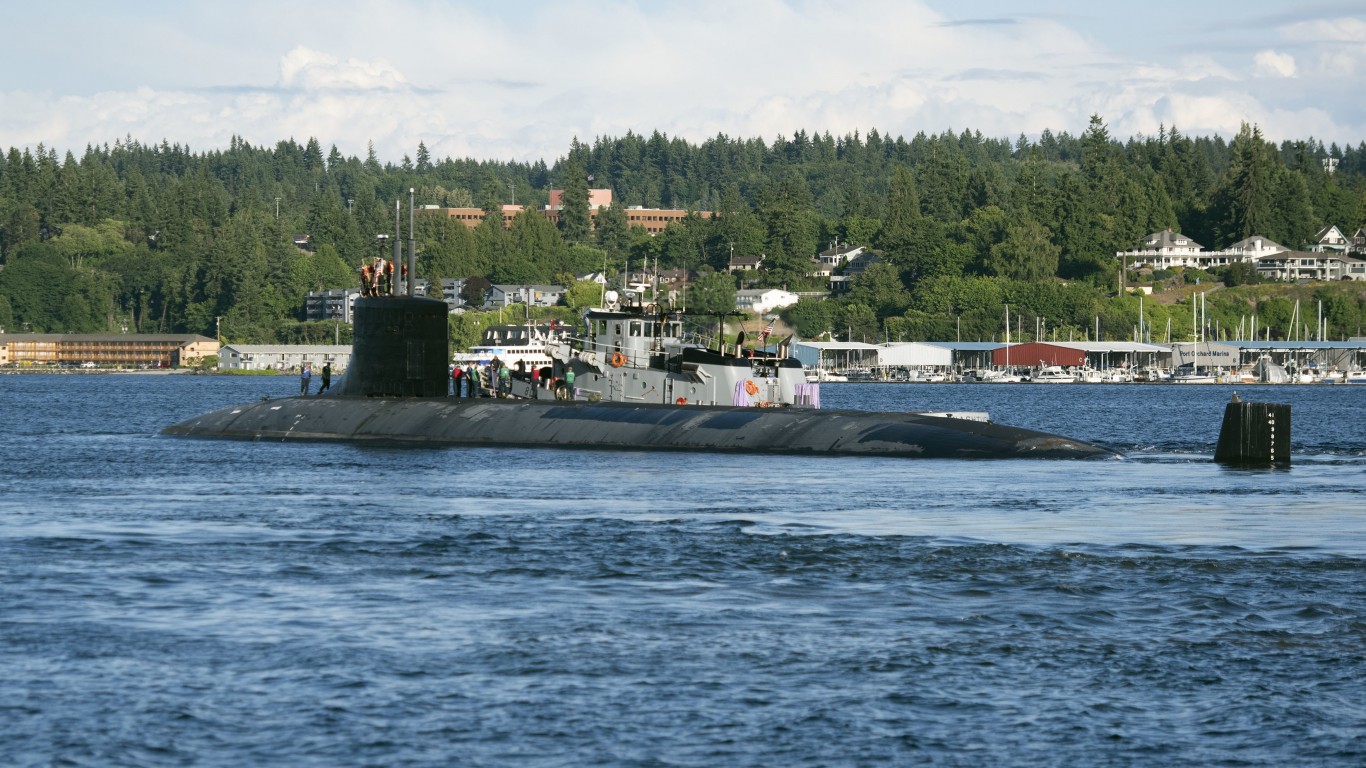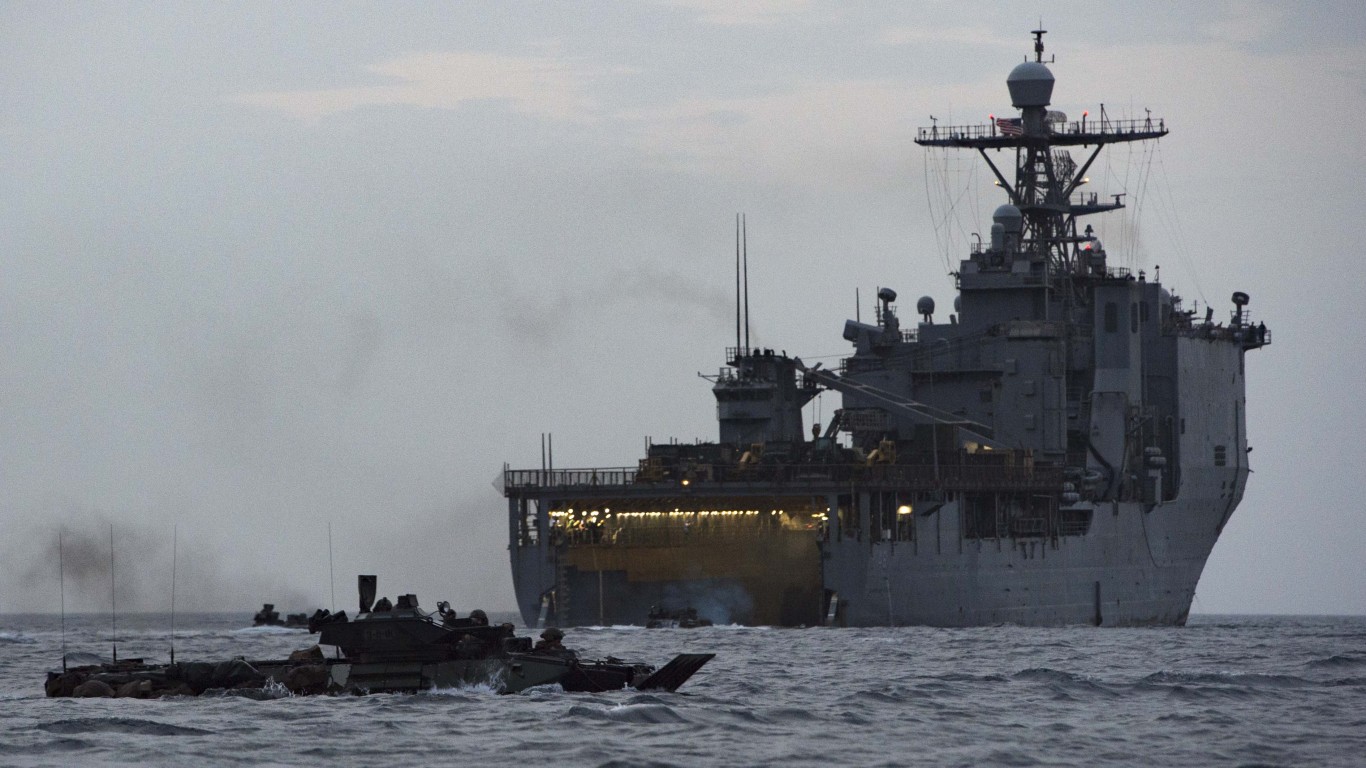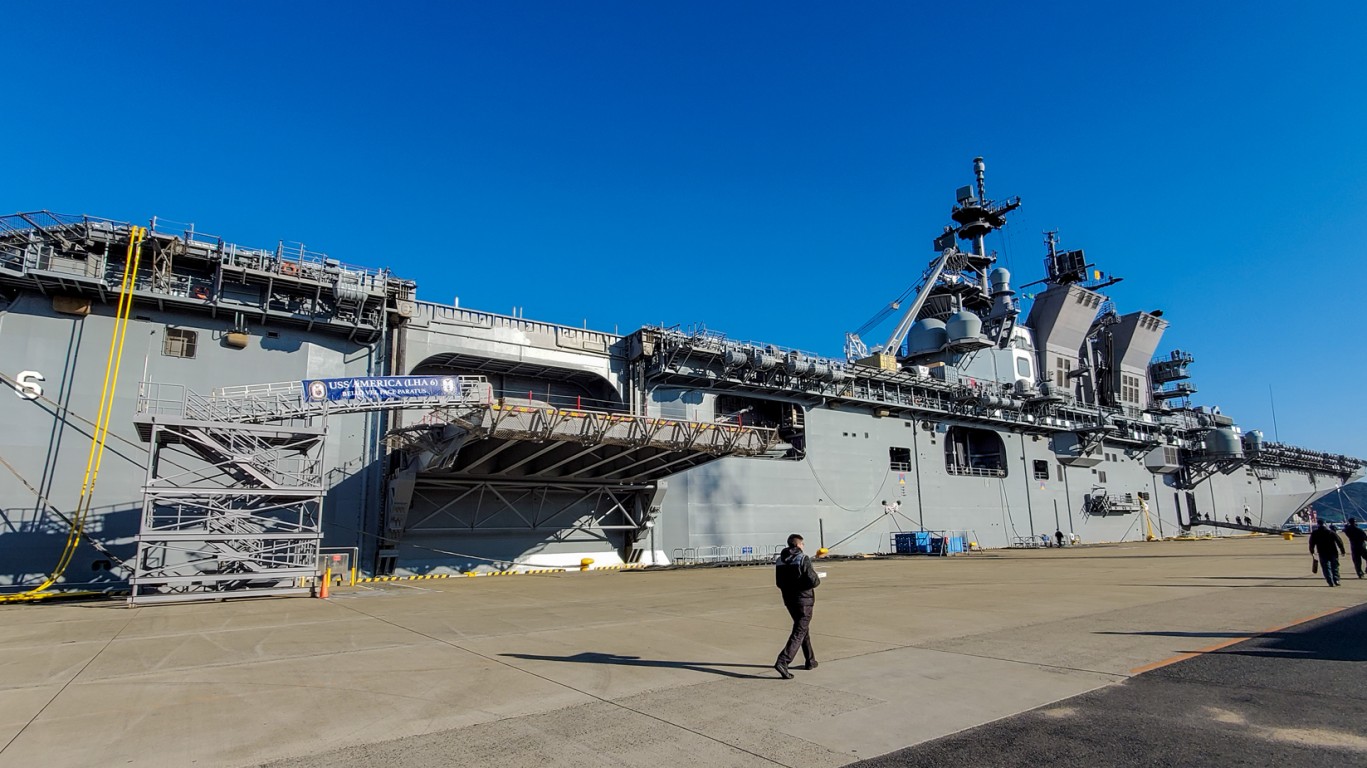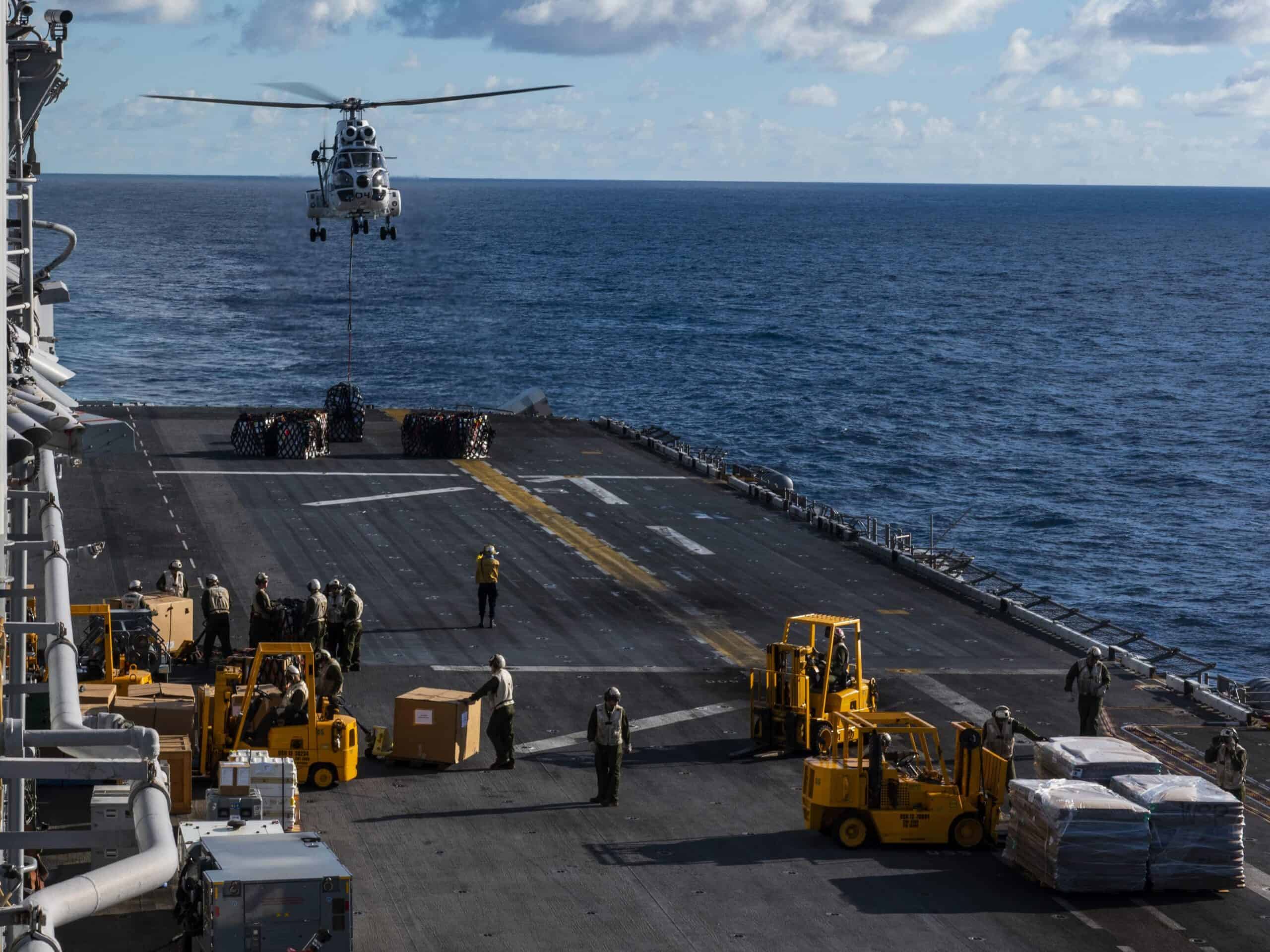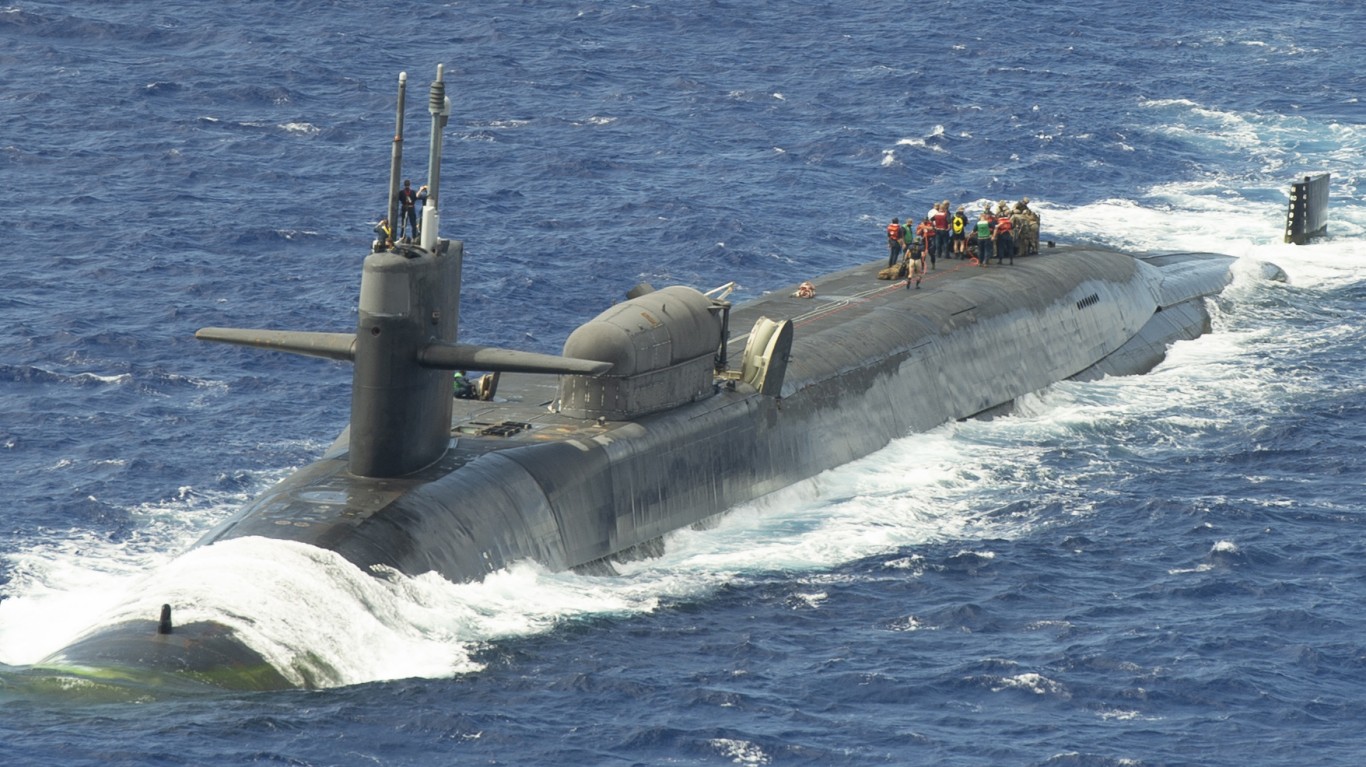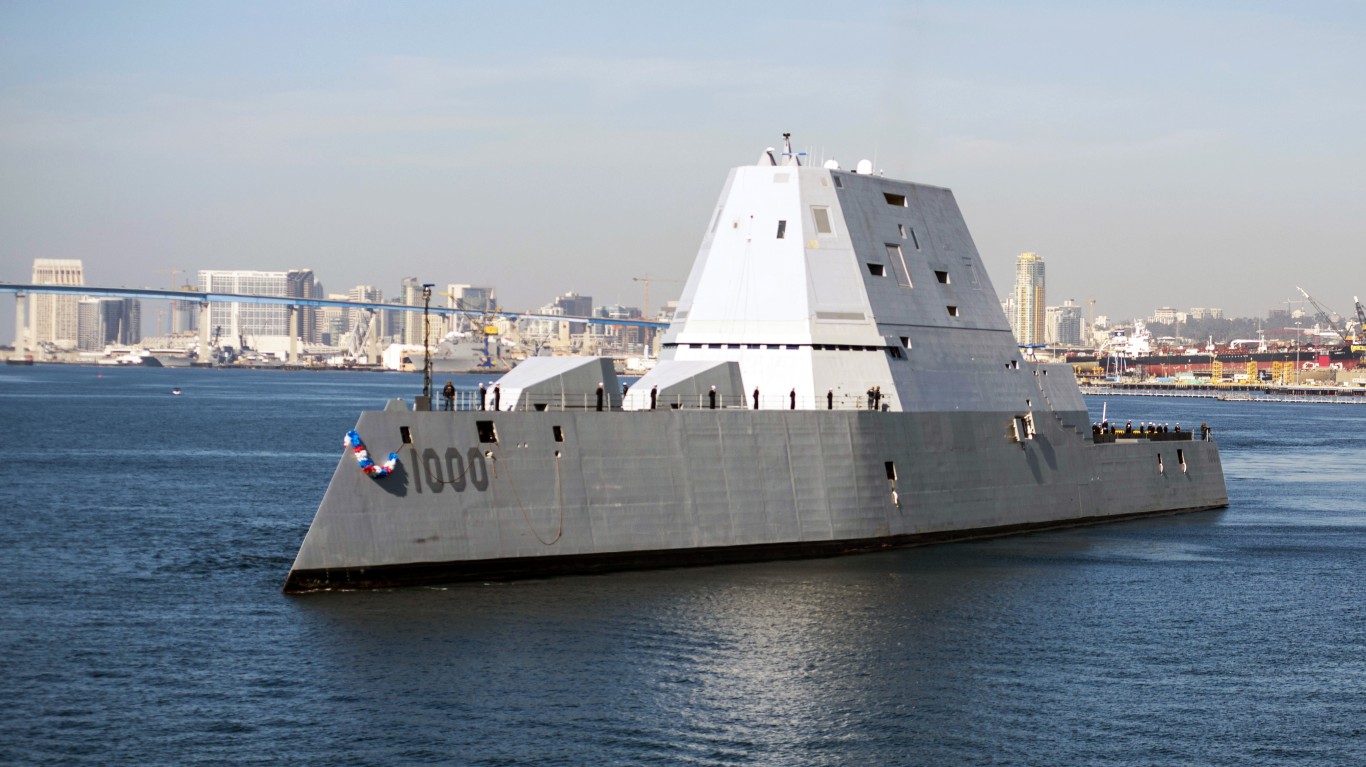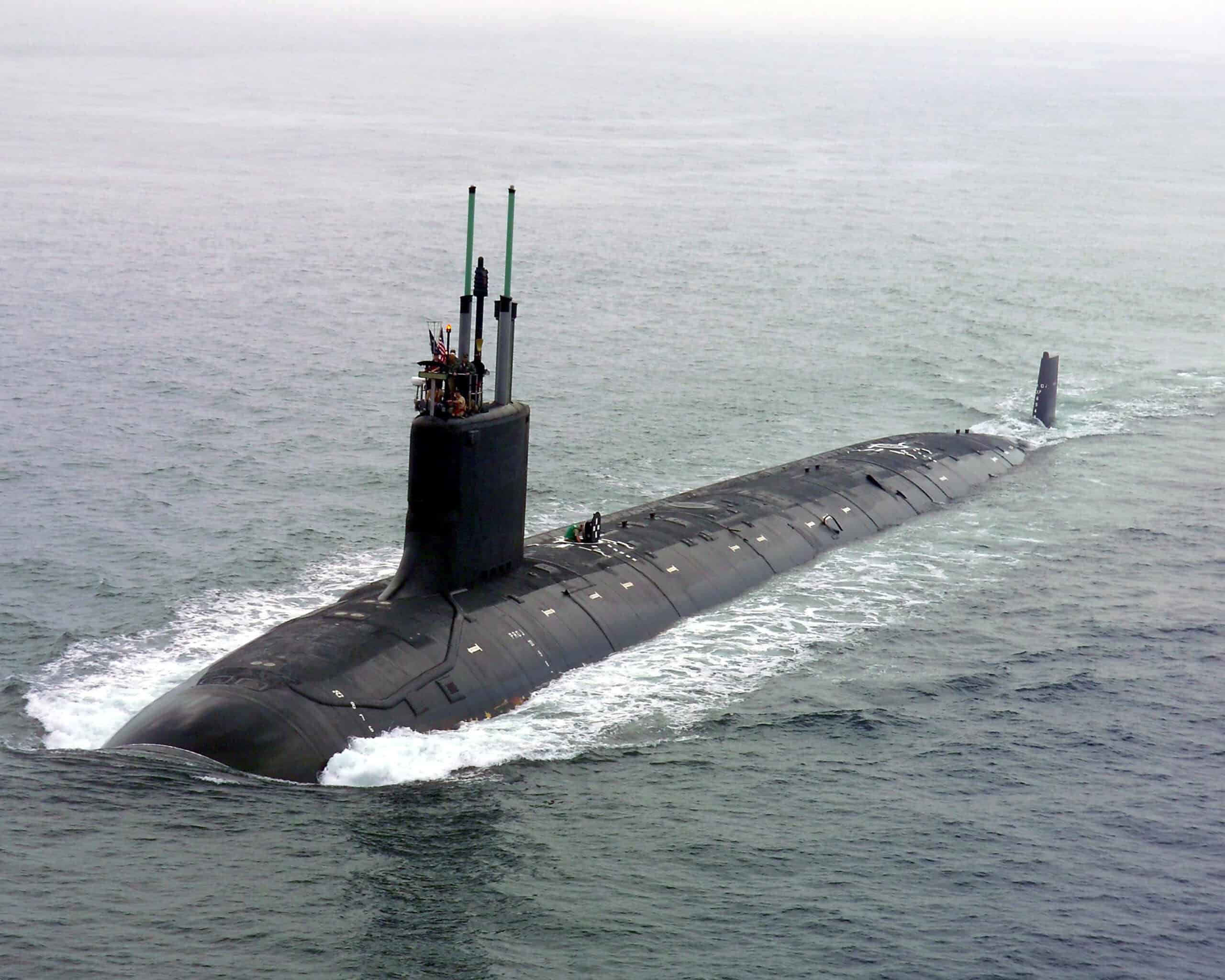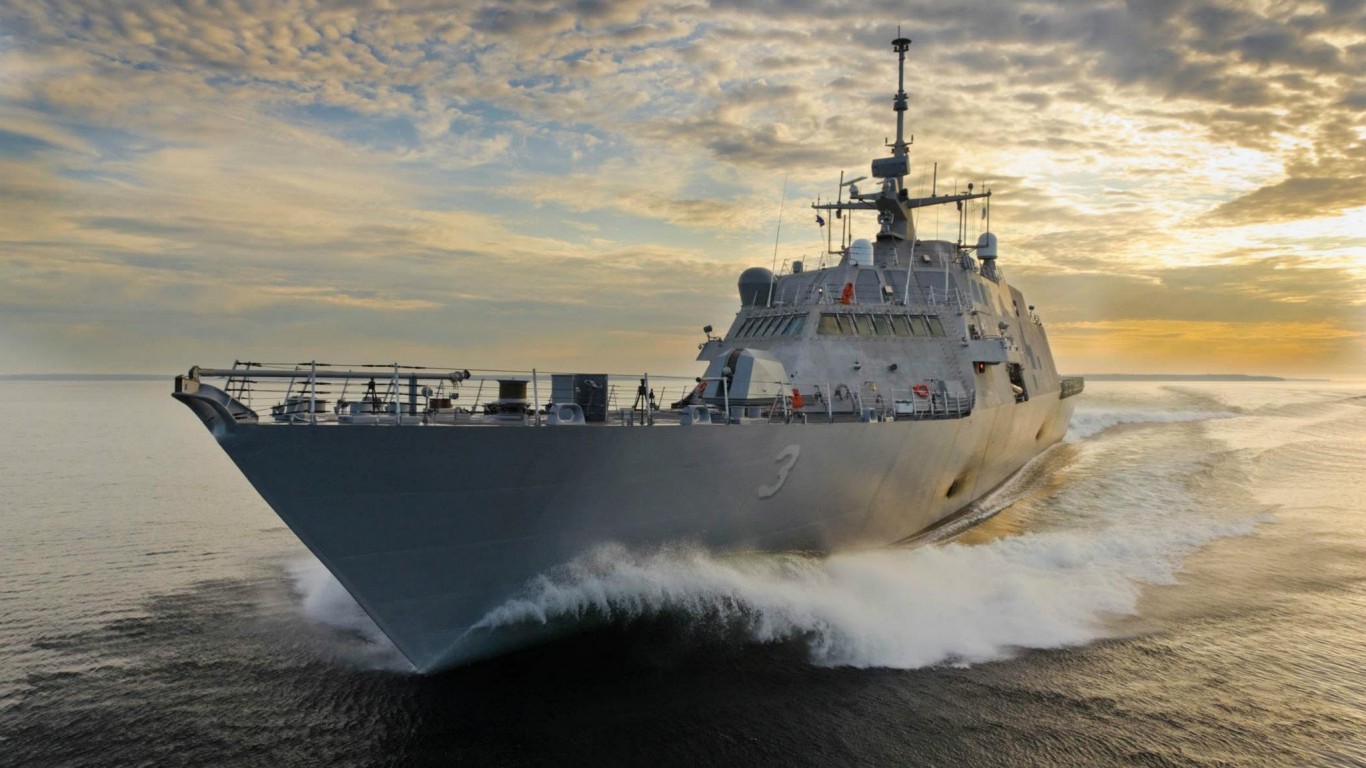
The U.S. Navy has recently been embattled with Houthi rebels from Yemen in an effort to keep international waterways clear of hostile forces. Over 50 vessels have been targeted in the Red Sea corridor since November, as the U.S. Navy has tried to secure the region. (This is every warship and submarine that fought in the Battle of Midway.)
In order to effectively secure this region, U.S. forces need to act quickly with their formidable fleet. This includes some of the fastest and most advanced warships and submarines on the planet. These vessels are not only important for securing the U.S. national defense but also for bringing stability to the international community.
Here, 24/7 Wall St. is taking a closer look at the fastest warships and submarines in the U.S. Navy’s fleet. To identify the fastest warships and submarines in the U.S. Navy, 24/7 Wall St. referenced a catalog of naval vessels from Military Factory, an online database of arms, vehicles and aircraft. The warship and submarine classes were ranked in order of their top speed. We included supplemental information regarding type, crew size, armament, and more.
One of the fastest warship classes in the employ of the U.S. Navy is the Arleigh Burke class of destroyers. These are capable of achieving speeds of roughly 35 mph. They are equipped with some of the most technologically advanced defensive countermeasures in the form of the Aegis Combat System. Overall, their speed allows them to operate alongside aircraft carriers as well as in other various capacities. (Are aircraft carriers still relevant for defense?)
Ultimately, the speed of these warships and submarines is a key factor in their operational capabilities, allowing the U.S. Navy to project power around the world.
Here is a look at the fastest warships and submarines in the U.S. Navy:
Why Are We Covering This?
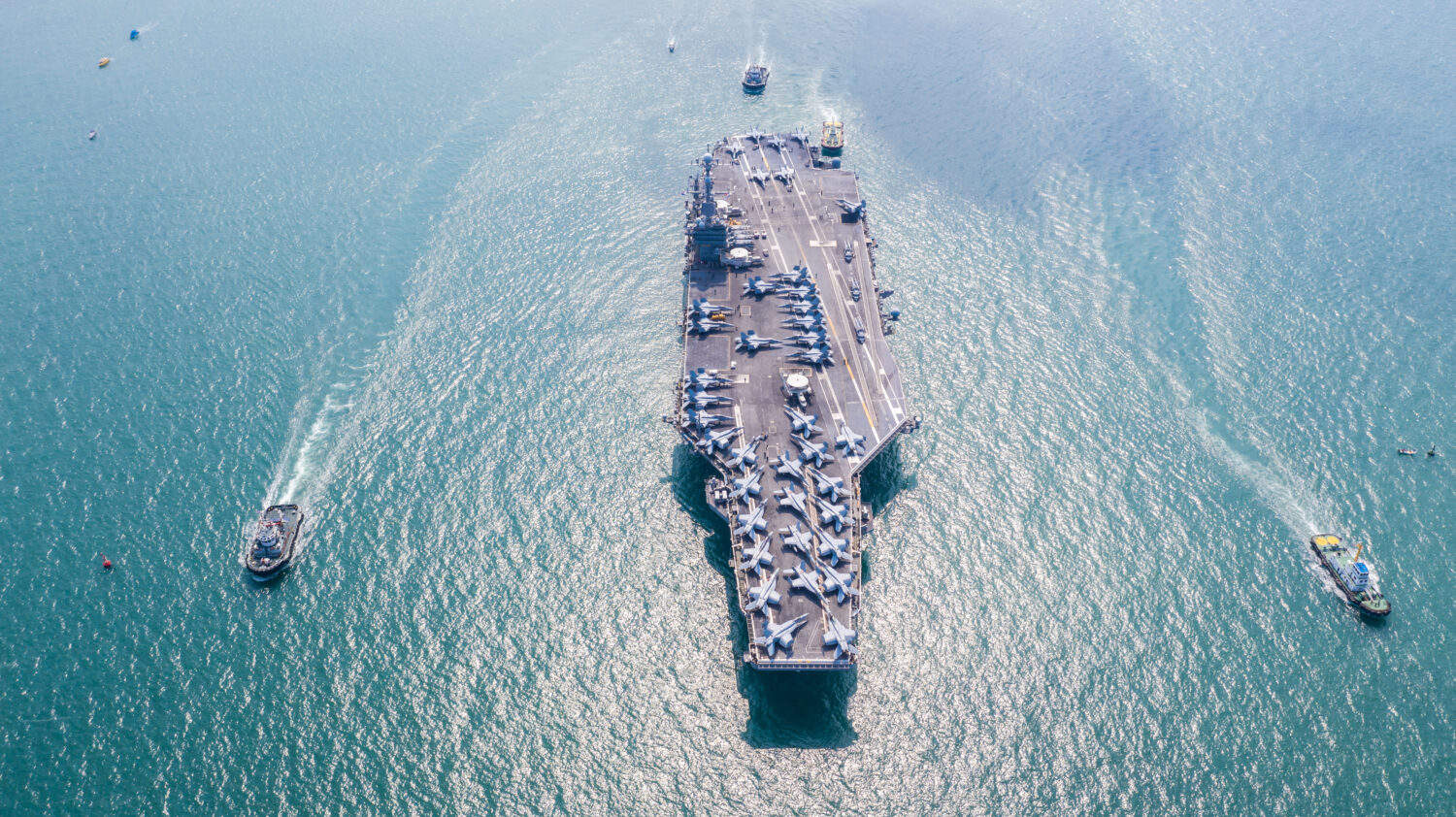
Understanding the U.S. Navy and its capabilities gives context to larger national defense strategies and geopolitical relations. It’s technological innovations have profound impacts not just on the military but on civilian life as well.
19. Avenger-class
- Top speed: 16.1 mph
- Type: Mine countermeasures ship
- Year introduced: 1987
- Crew size: 81
- Displacement: 1,367 tons
18. Seawolf-class
- Top speed: 20.7 mph
- Type: Attack submarine
- Year introduced: 1997
- Crew size: 116
- Displacement: 9,140 tons
17. Harpers Ferry-class
- Top speed: 23.0 mph
- Type: Amphibious assault ship
- Year introduced: 1995
- Crew size: 923
- Displacement: 16,601 tons
16. Whidbey Island-class
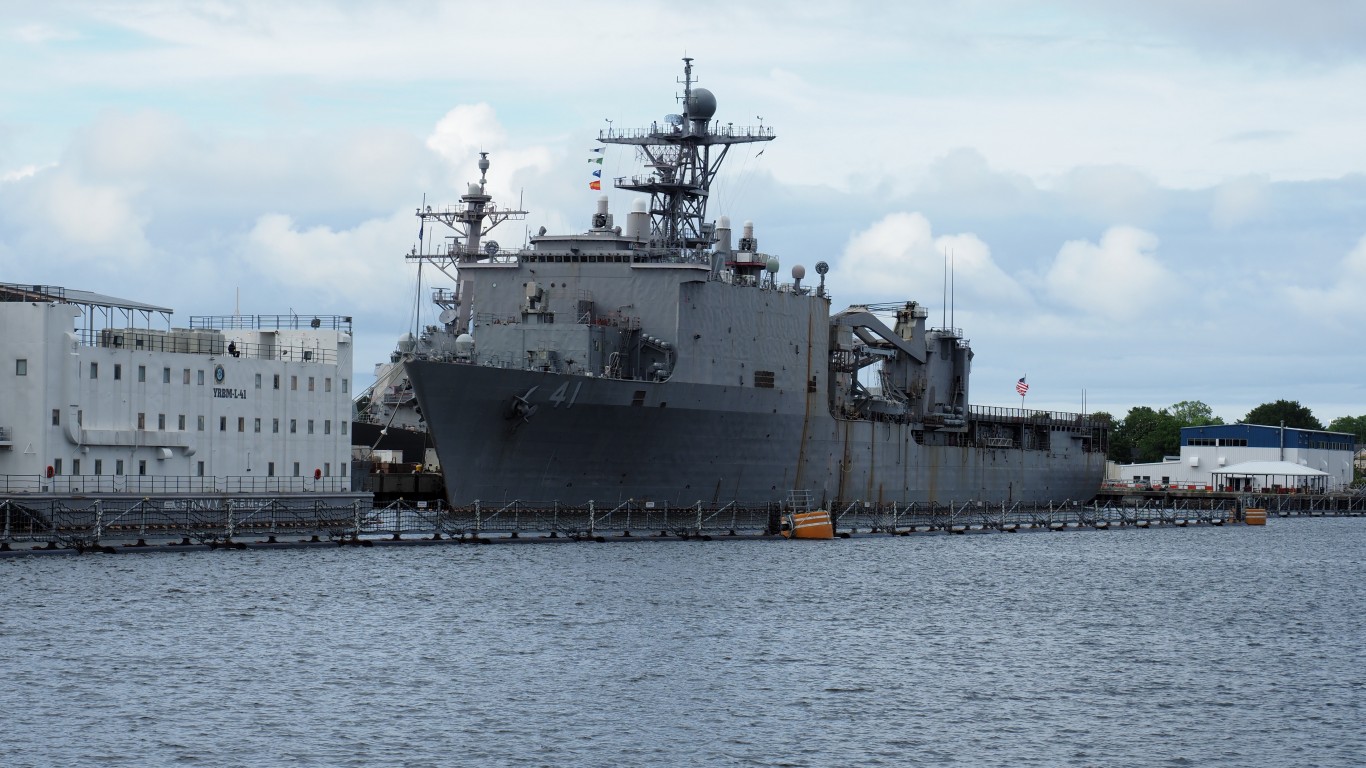
- Top speed: 23.0 mph
- Type: Amphibious assault ship
- Year introduced: 1985
- Crew size: 927
- Displacement: 16,360 tons
15. America-class
- Top speed: 25.3 mph
- Type: Amphibious assault ship
- Year introduced: 2014
- Crew size: 2,745
- Displacement: 46,000 tons
14. San Antonio-class
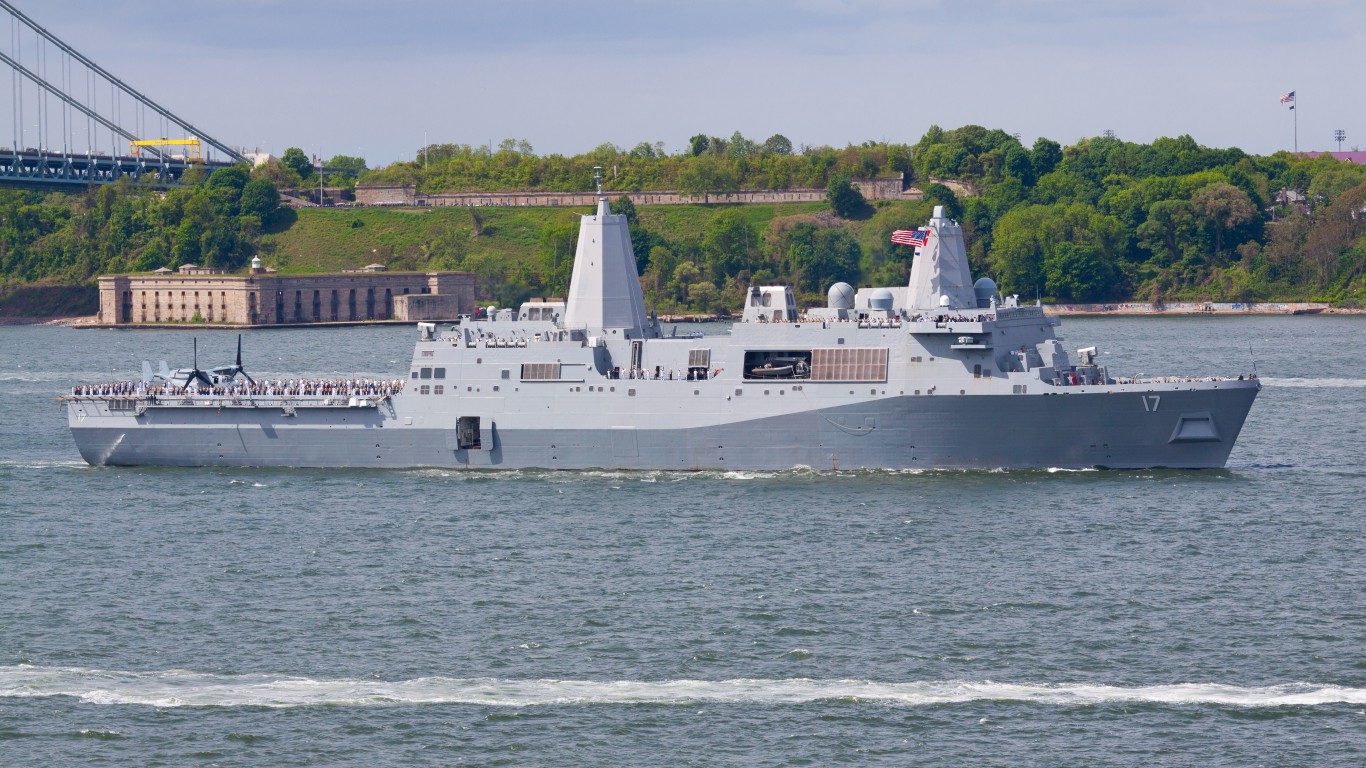
- Top speed: 25.3 mph
- Type: Amphibious assault ship
- Year introduced: 2006
- Crew size: 361
- Displacement: 25,000 tons
13. Blue Ridge-class
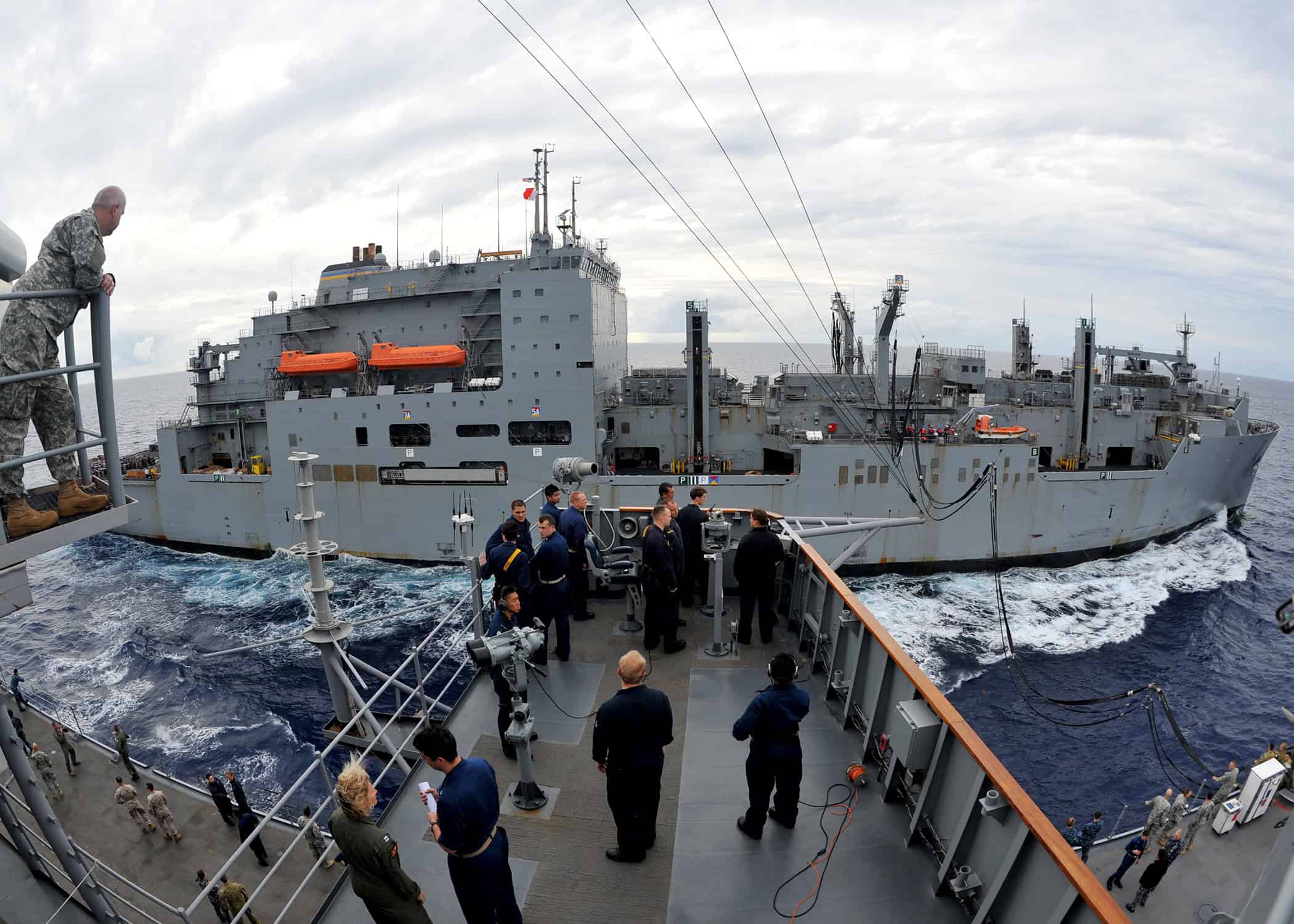
- Top speed: 26.5 mph
- Type: Command ship
- Year introduced: 1970
- Crew size: 842
- Displacement: 18,875 tons
12. Wasp-class
- Top speed: 26.5 mph
- Type: Amphibious assault ship
- Year introduced: 1989
- Crew size: 3,275
- Displacement: 41,182 tons
11. Ohio-class
- Top speed: 28.8 mph
- Type: Nuclear submarine
- Year introduced: 1981
- Crew size: 153
- Displacement: 16,765 tons
10. Ford-class
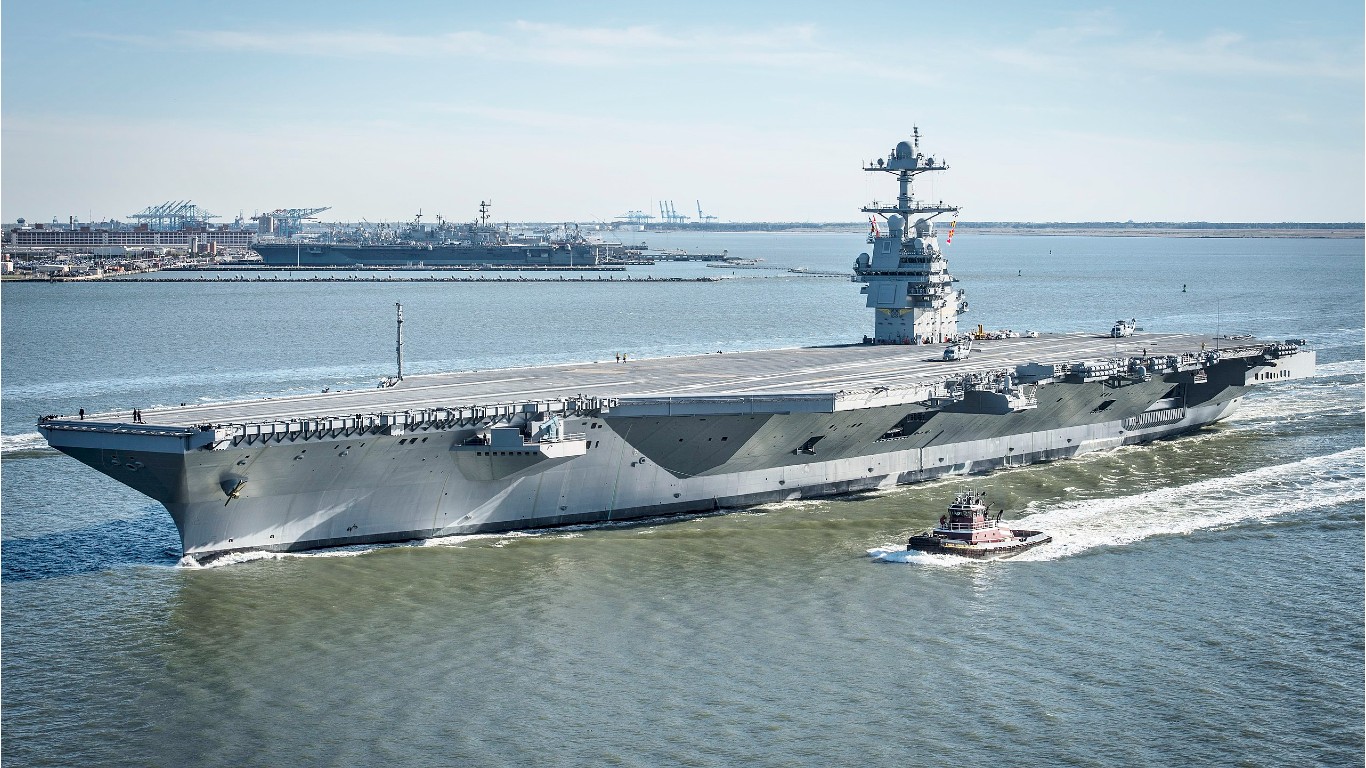
- Top speed: 34.5 mph
- Type: Aircraft carrier
- Year introduced: 2017
- Crew size: 4,660
- Displacement: 112,000 tons
9. Zumwalt-class
- Top speed: 34.5 mph
- Type: Guided-missile destroyer
- Year introduced: 2016
- Crew size: 140
- Displacement: 14,564 tons
8. Nimitz-class

- Top speed: 34.5 mph
- Type: Aircraft carrier
- Year introduced: 1975
- Crew size: 5,680
- Displacement: 97,000 tons
7. Los Angeles-class
- Top speed: 34.5 mph
- Type: Nuclear submarine
- Year introduced: 1976
- Crew size: 134
- Displacement: 6,072 tons
6. Arleigh Burke-class
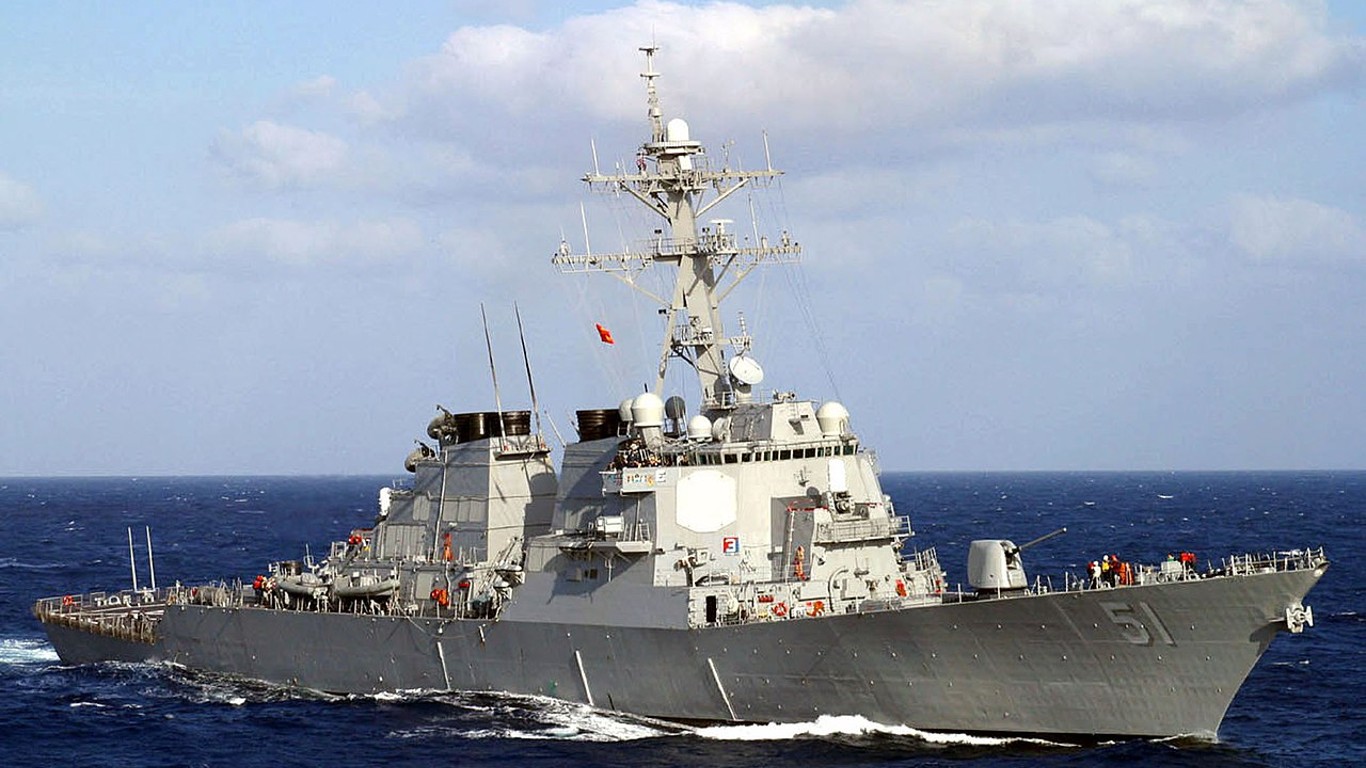
- Top speed: 34.5 mph
- Type: Guided-missile destroyer
- Year introduced: 1991
- Crew size: 323
- Displacement: 8,885 tons
5. Ticonderoga-class
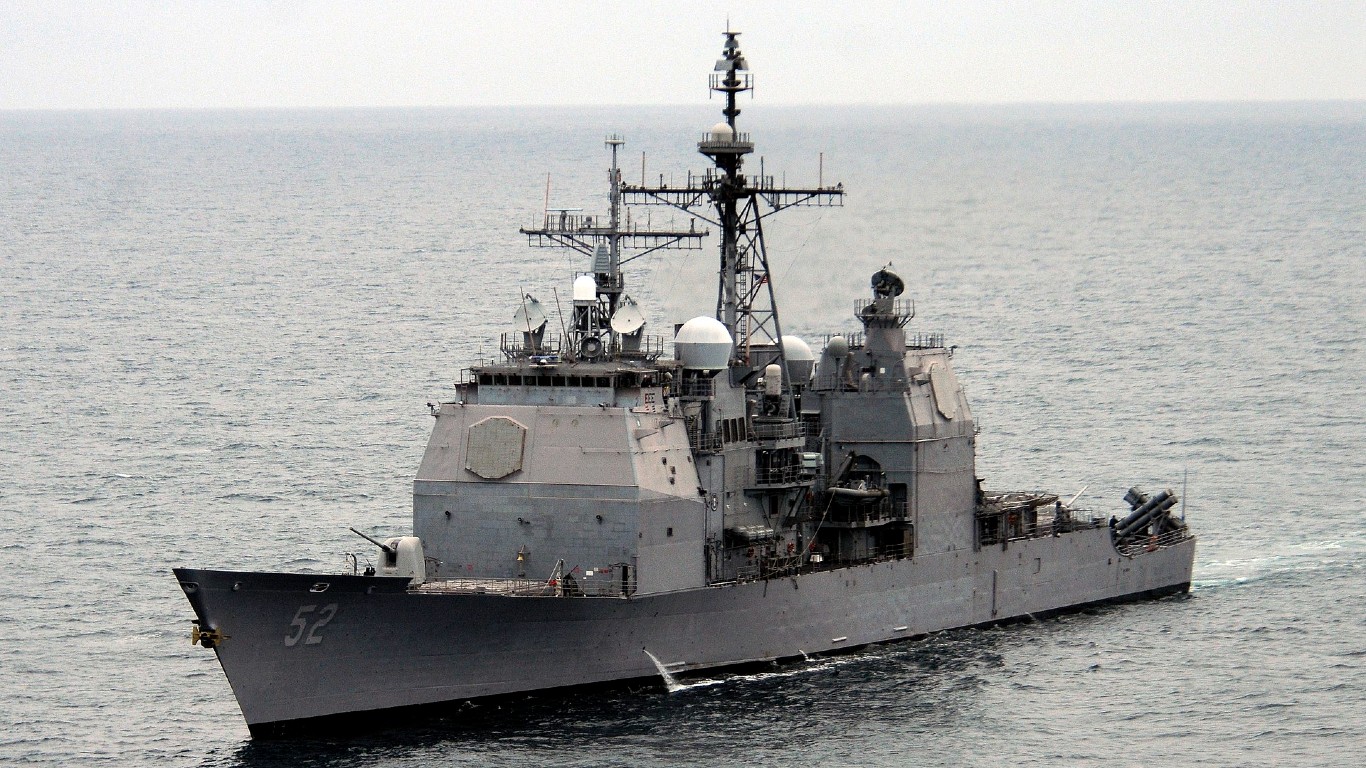
- Top speed: 37.4 mph
- Type: Cruiser
- Year introduced: 1986
- Crew size: 330
- Displacement: 9,800 tons
4. Cyclone-class

- Top speed: 40.3 mph
- Type: Patrol ship
- Year introduced: 1993
- Crew size: 30
- Displacement: 335 tons
3. Virginia-class
- Top speed: 40.3 mph
- Type: Nuclear submarine
- Year introduced: 2004
- Crew size: 134
- Displacement: 7,800 tons
2. Independence-class

- Top speed: 50.6 mph
- Type: Corvette
- Year introduced: 2010
- Crew size: 75
- Displacement: 3,300 tons
1. Freedom-class
- Top speed: 54.1 mph
- Type: Littoral combat ship
- Year introduced: 2008
- Crew size: 125
- Displacement: 3,000 tons
Take Charge of Your Retirement In Just A Few Minutes (Sponsor)
Retirement planning doesn’t have to feel overwhelming. The key is finding expert guidance—and SmartAsset’s simple quiz makes it easier than ever for you to connect with a vetted financial advisor.
Here’s how it works:
- Answer a Few Simple Questions. Tell us a bit about your goals and preferences—it only takes a few minutes!
- Get Matched with Vetted Advisors Our smart tool matches you with up to three pre-screened, vetted advisors who serve your area and are held to a fiduciary standard to act in your best interests. Click here to begin
- Choose Your Fit Review their profiles, schedule an introductory call (or meet in person), and select the advisor who feel is right for you.
Why wait? Start building the retirement you’ve always dreamed of. Click here to get started today!
Thank you for reading! Have some feedback for us?
Contact the 24/7 Wall St. editorial team.
